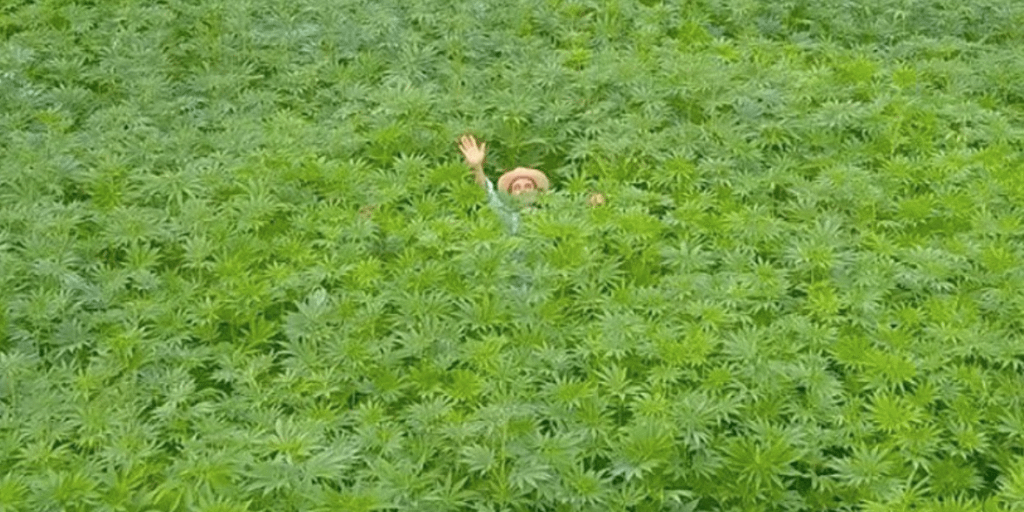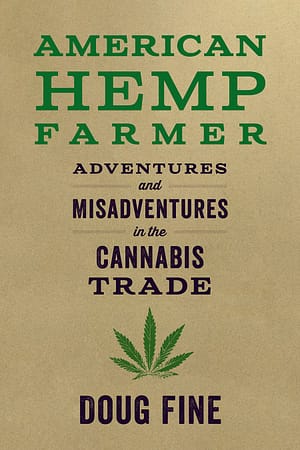American Hemp Farmer: An Interview with Doug Fine

Investigative journalist, farmer, and goat herder Doug Fine has been writing about hemp for 26 years. Author of Hemp Bound and Too High to Fail, he believes that hemp can lead the way toward a new, regenerative economy. In this interview with Chelsea Green, Fine gives us the straight dope on one of the world’s most fascinating and lucrative crops and explains why you should start growing it, too.
The following is from the 2020 Chelsea Green Spring Journal. It has been adapted for the web.
Since Hemp Bound in 2014, how has the hemp landscape changed? What’s so special about the plant at this moment?
The publication of Hemp Bound coincided with the first federal legalization of hemp in the 2014 farm bill. Now we’re bookending it with American Hemp Farmer as the industry is exploding exponentially. It’s no exaggeration to say that the re-emergence of the cannabis hemp industry is the biggest social and economic phenomenon since the emergence of Silicon Valley and our digital age economy. There was steel and the automobile industry. There was high tech. Now there is cannabis hemp. The potential for independent farmers and struggling rural communities to benefit is greater than it’s been for a century.
Why did you decide to start growing it?
As a journalist who’s been covering hemp since 1994, I believe it’s too important a phenomenon to the economy, to society, and most importantly, to the climate change mitigation effort not to participate in it. It’s not just me who feels that way. This is a genuine movement. The book talks about how we create lucrative livings for farmers who are going to be building soil and sequestering carbon as they go about their entrepreneurial efforts. It’s a win-win for humanity.
What makes hemp a good twenty-first-century crop?
Mitigating climate change is obviously essential if we want our kids to survive. But to ask economically struggling farmers to put all their time, energy, and savings into this, it has to have the potential to have a consistent, long-term payoff. And hemp does. There are so many aspects of the plant that are promising, and so many ways to be entrepreneurial. What we’ll learn in the book, largely through the humorous misadventures of my own projects, is that it involves a lot of hard work, but the potential is there, especially if we can educate customers to seek out regenerative, farmer-controlled entities.
Talk about your vision for how the hemp economy should work.
My slogan these days is, “This time the farmers are in charge.” We were a nation of 90 percent farmers in the founding fathers’ time, 30 percent farmers when cannabis prohibition began in 1937, and 1 percent farmers now. If we play this right from the regenerative entrepreneurial standpoint, we actually have a chance to get back to that 30 percent. The key is to figure out the formula that works in the modern financial world. American Hemp Farmer proposes a regional, farm-to-table approach that starts with soil building. The end game is not cashing in on the Stock Exchange; it’s vibrant, regenerative communities. A product that is cultivated, prepared, packaged, and marketed regionally can be very lucrative. It’s not diluted.
How can we go beyond the CBD craze and avoid a boom and bust market scenario?
The correction to the wild west markets in that one segment of the hemp industry has already started. In every gold rush, it’s the prospectors who tend to get hurt the most. But hemp has 111 known cannabinoids, and the boom is based on only one component of the flower of the plant. Rather than thinking of it as a pharmaceutical with chemicals to be isolated, we should look at hemp entrepreneurialism from a whole-plant, top-shelf, vintage perspective. The craft side of cultivation will help us weather the vicissitudes of the many coming gold rushes.
Recommended Reads
Recent Articles
Oxeye daisies are one of the most important plants for pollinators including beetles, ants, and moths that use oxeye daisies as a source of pollen and nectar. Instead of thinking about removing a plant like oxeye daisy, consider how you can improve the fertility and diversity of habitat resources in your home landscape, garden, or…
Read MoreSo you want to start reaping your harvest, but you’re not sure where to start? Learn how to break down the options of harvesting tools!
Read MoreWhat’s so great about oyster mushrooms? First, you can add them to the list of foods that can be grown indoors! They are tasty, easy to grow, multiply fast, and they love a variety of substrates, making oyster mushrooms the premium choice. The following is an excerpt from Fresh Food from Small Spaces by R. J.…
Read MoreEver heard the phrase, “always follow your nose?” As it turns out, this is a good rule of thumb when it comes to chicken manure. Composting chicken manure in deep litter helps build better chicken health, reduce labor, and retain most of the nutrients for your garden. The following is an excerpt from The Small-Scale Poultry…
Read More









